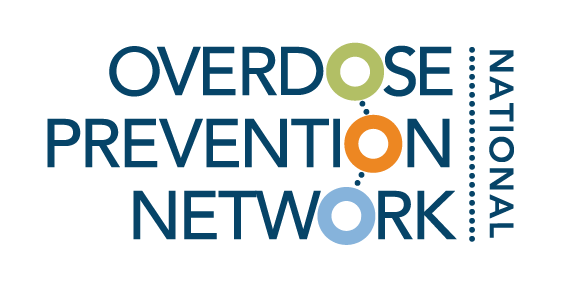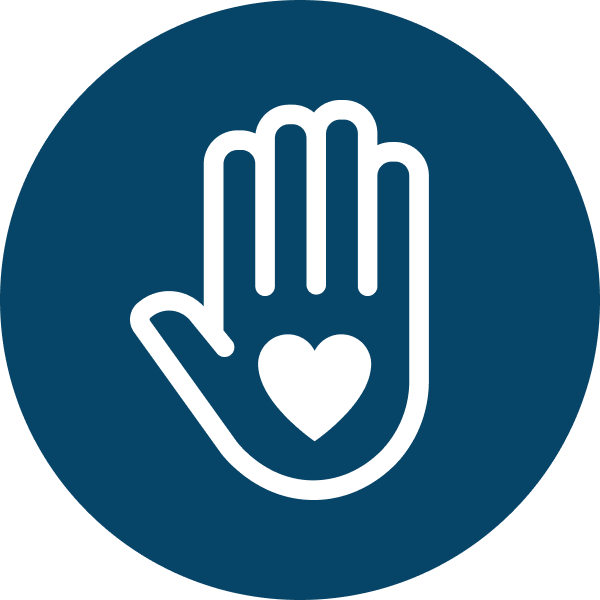
Overdose Prevention in Rural Communities
Overdose Prevention Strategies
Implementing evidence-based programs focused on prevention, treatment, harm reduction and recovery are essential for saving as many lives as possible and promoting a positive quality of life in rural America.
Jump to a section within Overdose Prevention Strategies:
Prevention
Treatment
Barriers to Treatment
Harm Reduction
Recovery
Prevention
Prevention programs can prevent or delay substance misuse by equipping individuals and families with the knowledge and skills to make healthy choices. These programs address substance use, but also promote overall health and wellbeing. Examples include substance use and harm reduction educational programs for youth, widespread substance use screening and referrals, local awareness campaigns about the dangers of fentanyl, and mental health screening and support services.
Related resources
Harm Reduction Curricula for Youth: Safety First: Real Drug Education for Teens. To be safe, young people need accurate, honest, compassionate drug education. This is why the Drug Policy Alliance (DPA) developed and distributed Safety First: Real Drug Education for Teens. It is the nation’s first harm reduction-based drug education curriculum for high school students and can be used in rural communities. Find the Safety First curriculum and all its supporting materials on Stanford Medicine’s REACH Lab site here.
Helping Parents Talk to their Teens about Drugs: The Let’s Talk booklet is another prevention resource developed by a regional coalition serving both rural and urban communities to help parents facilitate conversations with their children about substance use. They operated a massive mailing campaign to send a printed version of the booklet, in both English and Spanish, to every parent of incoming 9th graders in their region.
Public Awareness Campaigns: The CDC generates a number of educational campaigns that you can utilize in your community. Take a look here.
Treatment
Treatment strategies recognize that substance use disorder is a chronic, yet treatable brain disease. Abundant evidence shows that medications for addiction treatment (MAT) including methadone, buprenorphine, and naltrexone, all reduce opioid use and opioid use disorder-related symptoms along with the risk of overdose death, infectious disease transmission, and illegal behaviors associated with drug use. These medications can be prescribed by addiction specialists, emergency department clinicians, and primary care providers, including via telehealth. A key goal for rural communities is to increase the number of MAT prescribers by managing pushback among providers by conducting outreach and encouraging local clinicians and emergency departments to offer MAT. You can also promote free virtual trainings for local providers in your community to begin prescribing MAT.
You can distribute this treatment locator in your community, which includes the option to filter for telehealth addiction treatment services.
Related resource
Free Virtual Training on Addiction Treatment for Rural Clinicians: Patients often travel many miles to see a provider, especially those in rural areas without adequate healthcare facilities or public transportation. Project ECHO® (Extension for Community Healthcare Outcomes) helps meet this challenge by facilitating access to specialty care through rural health frontline providers in a hub-and-spoke model. Expert specialists at academic hubs connect with rural primary care physicians in local communities through spokes using widely available teleconferencing technology. Another key resource is the Providers Clinical Support System, which offers free trainings for clinicians to prescribe medication-assisted treatment (MAT) like buprenorphine to their patients. You can promote these trainings to providers in your community. This will help them get started in prescribing MAT and also help them meet the new requirement to have at least 8 hours of training on opioid or other substance use disorders in order to hold a DEA license.
CASE STUDY
Increasing Access to Addiction Treatment through Emergency Medical Services
The Contra Costa County Emergency Medical Services (EMS) Pilot Project is the first in the country for paramedics to provide medication for addiction treatment (MAT) directly to patients in withdrawal from opioid use disorder. This project maximizes the EMS response to provide treatment for opioid use disorder (OUD) and harm reduction measures to both prevent future overdoses and encourage long term treatment. Having paramedics trained in evidence-based OUD treatment makes them a logical point of intervention and an integral part of a system-wide community of caregivers helping people with OUD. For more information, click here.
Barriers to Treatment
Research has shown that Medication Assisted Treatment (MAT) is the most effective therapy to treat opioid use disorder (OUD). People living with OUD in rural communities often face barriers to accessing MAT, including fewer transportation and treatment options, compared with those available in urban areas. Regulatory and community barriers to MAT can be resolved by easing unnecessarily restrictive licensing standards, enhancing payment for MAT by state Medicaid programs, and educating community members to reduce opposition to MAT.
SUD treatment centers in rural areas often do not offer the same scope of services as their urban counterparts. Rural facilities are less likely to provide buprenorphine; they also offer fewer wraparound services, such as case management and recovery groups, which have been shown to improve health outcomes.
The barriers to recovery in rural areas typically include:
Limited funding for recovery residences
Transportation challenges
Limited access to a continuum of care/recovery-oriented systems of care
Lack of detoxification facilities
Lack of mental, dental, and health services
Limited access to transition and long-term housing
Lack of anonymity
Limited access to mutual-aid meetings
Limited access to employment
Related resources
The Power of Partnership: Overcoming Barriers to Treatment and Recovery. This newsletter from rural Appalachia spotlights the power of partnership for addressing the substance use disorder (SUD) crisis in rural communities.
Provider Education and Academic Detailing. Taking a cue from pharmaceutical companies, academic detailing is a method to change provider behavior through brief in-person encounters.
MAT Criminal Justice Innovations: This session touches on two innovative programs integrating harm reduction into the criminal justice system in a rural community.
End of the X-Waiver: A New Frontier in Addiction Treatment. The recent elimination of the X-Waiver, a burdensome requirement for clinicians to prescribe addiction treatment, is gone. This recording highlights opportunities to increase access to addiction treatment.
Providers Clinical Support System. This site offers education for providers and meets the 8-hour DEA license renewal requirement with the end of the X-Waiver.
Innovation Landscape: Telehealth MAT. This brief provides an overview of the developing but nascent landscape of organizations offering telehealth MAT.
CASE STUDY
For One Rural Community, Fighting Addiction Started with Recruiting the Right Doctor
This article from NPR focuses on the barriers of finding treatment services in rural communities and how NorthLakes Community Clinic, which serves Medicaid and Medicare patients, expanded its addiction recovery program with the help of state and federal grants targeting opioid use. Central to their plan was a physician champion who could lead the new program. To read more about this program, click here.
Harm Reduction
Harm reduction principles and strategies are essential for saving lives given the high potency of the current drug supply, including fentanyl. This includes making sure that naloxone, or Narcan, is widely available throughout rural communities to reverse an overdose and utilizing syringe service programs to reduce transmission of HIV, Hepatitis C, and other infectious diseases. Harm reduction also includes practical strategies like encouraging people not to use alone and using fentanyl test strips to check their drugs.
Examples
Check out these short case studies on how four rural communities increased access to naloxone in their community by distributing them in jails, through vending machines, and developing an online ordering system.
Take a look at this video, How a Rural County Implemented Harm Reduction Strategies, which shows how a rural coalition successfully implemented harm reduction strategies and a conversation with a former sheriff on how to pursue harm reduction with law enforcement in rural settings.
Wider access to Narcan helps rural communities fight overdose deaths. The FDA recently made it easier for people to obtain a powerful overdose-reversing medicine. Narcan previously required a prescription, but soon will be sold over the counter. Communities are already using it to fight overdose deaths.
It’s Our Backyard Too: Building Community Centered Support for Harm Reduction. A toolkit for rural coalitions to build support for harm reduction programs in the community.
“Where They’re At”—Harm Reduction in Rural America. Read this compelling story of harm reduction programs in rural America and how removing these programs is creating the bigger problem of deaths due to overdose.
Implementing harm reduction in Small Town, USA. Harm reduction is a new idea to a lot of small communities, and education about it is often needed. Additionally, the task of implementing these services can seem daunting, with fear of community opposition ever-present. This session outlines community building and planning for harm reduction programs as well as challenges and successes in implementing services.
Recovery
Recovery programs help people meet their goals to reduce or stop their drug use. Through the help of professionals and peers, these programs provide the social support necessary to sustain change. SAMHSA’s National Helpline is a great resource to share with someone who may have a substance use disorder: 1-800-662-HELP (4537). You can also learn more about recovery and find recovery support services through SAMHSA, startyourrecovery.org, and by getting involved with Faces and Voices of Recovery.
Related resource
Strategies for Rural Communities for Addressing Substance Misuse among Families Involved with the Child Welfare System. This brief describes 9 programs and highlights ways they have addressed challenges that rural communities face in serving child welfare-involved parents with substance use disorder.
CASE STUDY
Over the Hills and Through the Hollars: How One Program is Assisting Residents of Appalachia with Opioid Use Recovery
Results of a study evaluating the Kentucky Access to Recovery Program (KATR), which provides services to low-income adults recovering from opioid addiction in several rural eastern Kentucky counties. Study findings showed that KATR had meaningful impacts on the lives of service recipients by helping meet needs and reducing barriers to their ongoing recovery. Through its use of vouchers for support services and basic needs provision, KATR demonstrates a potentially effective strategy for increasing access to health-related social services for persons in recovery in predominantly rural areas.
CASE STUDY
Faith-based coalition creates lifeline in Ohio communities
Faith in Recovery Coalition offers hope for opioid use disorder in Fayette County, Ohio. In 2018, Faith in Recovery received the first of its Rural Health Opioid Program grants from Federal Office of Rural Health Policy, which allowed it to begin expanding its services. They created a program called Pathways to Recovery and distributed their “hope line” throughout the community as the place to call for those i crisis. The coalition also knew that it needed to address the root causes of opioid dependency in their community. Rather than focusing on detox and sobriety, peer support specialists meet patients where they’re at. They provide personal connections as the crucial step in creating a support network for people recovering from drug dependency in their rural community. Learn more. To learn more about the Faith In Recovery Program, click here.











